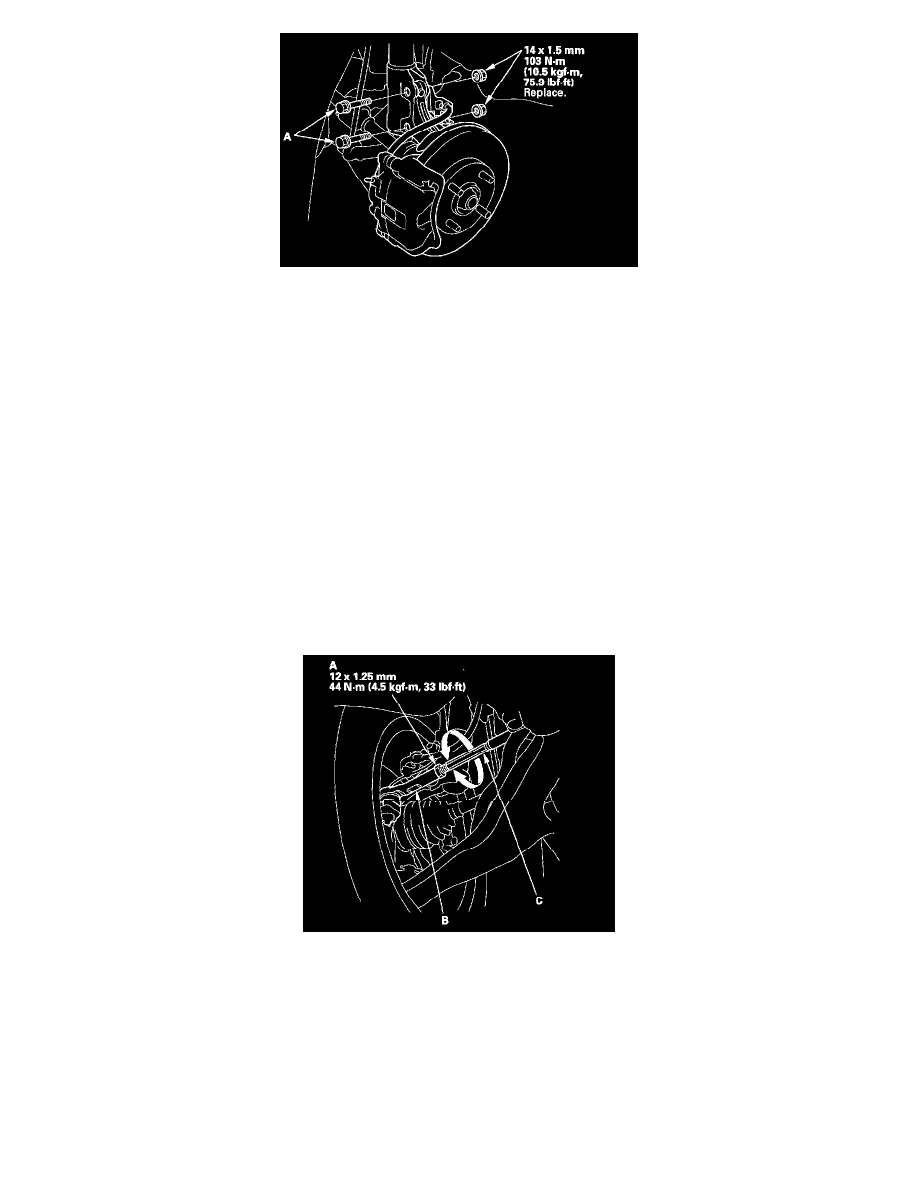Fit L4-1.5L (2008)

10. Tighten the new flange nuts to the specified torque value.
11. Install the front wheels.
12. Lower the vehicle to the ground, and bounce the front of the vehicle up and down several times to settle the suspension.
13. Measure the camber angle. If the camber angle is not within specification, check for damaged or bent suspension components. If the camber
measurement is correct, measure toe-in, and adjust it if necessary.
Front Toe Inspection/Adjustment
Use commercially available computerized four wheel alignment equipment to measure wheel alignment (caster, camber, toe, and turning angle).
Follow the equipment manufacturer's instructions.
1. Center the steering wheel spokes, and install a steering wheel holder tool.
2. Check the toe with the wheels pointed straight ahead.
Front toe-in: 0 ± 3 mm (0 ± 0.12 in.)
^
If adjustment is required, go to step 3.
^
If no adjustment is required, go to rear toe inspection.
3. Loosen the tie-rod locknuts; (A) while holding the flat surface sections (B) of the tie-rod end with a wrench, and turn both tie-rods (C) until the
front toe is within specifications.
4. After adjusting, tighten the tie-rod locknuts. Reposition the rack-end boot if it is twisted or displaced.
5. Do the memorizing for the torque sensor neutral position.
6. Go to rear toe inspection.
Rear Toe Inspection
Use commercially available computerized four wheel alignment equipment to measure wheel alignment (caster, camber, toe, and turning angle).
Follow the equipment manufacturer's instructions.
1. Release the parking brake to avoid an incorrect measurement.
2. Check the toe. If it is not within the specification, check for bent or damaged suspension components.
